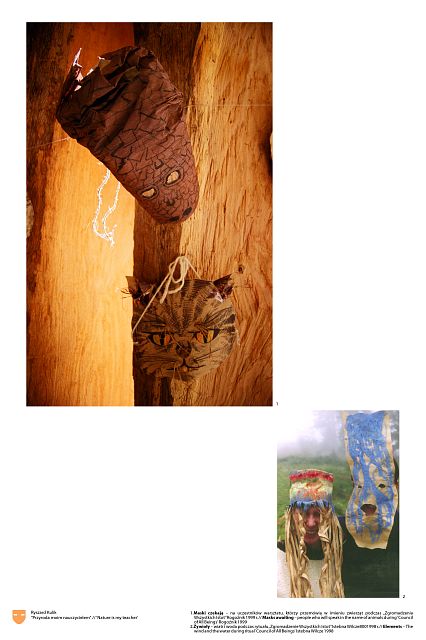 |
'Nature is my teacher'
'The efficiency of group ecological instruction in shaping ecologically friendly attitudes' RYSZARD KULIK
University of Silesia, Faculty of Pedagogy and Psychology,
Institute of Psychology, Department of Social and Environmental Psychology; Grażyńskiego 53, 40-126 Katowice
ul. Grażyńskiego 53, 40-126 Katowice
e-mail: kulik@us.edu.pl
|

Description popularizing the research project
Everybody sometimes dreams of being as free as a bird. Especially when you are snowed under with work or in troubles. You squirrel away fruit of your efforts and you are constantly as busy as a bee. In spite of this it is your colleague, an old wily fox, who gets a leave in the peak season and your stubborn as a mule neighbor keeps parking his car on your lawn.
Using expressions like faithful as a dog, lionhearted etc. we personify our 'lesser brothers' and compare ourselves to them. According to eternal traditions we ascribe evil and good attributes to animals.
These stereotypes make us smile at them, admire or look after them. On the other hand some of them arouse disgust, fear and aversion. Would it be different if we were taught from the cradle that we should be as caring as a spider, brave as an octopus, generous as a bat and sensitive as a hyena? Maybe we have to become a paramecium, a pathogenic bacteria, a Colorado beetle or a cockroach for a while to solve the dilemma? Maybe we have to emphasize with a huge worm-eaten oak with woodpeckers and whimpering chicks in nests, to know the value of a tiny blade of grass. When we try to escape the overwhelming consciousness of being a species with a Latin name, we are able to tighten our bonds with the Universe. Who knows how many times a ladybird felt human trying to understand what it meant when children were rhyming: 'Ladybird, ladybird fly away home'
Abstract
Project's purpose: to analyze the efficiency of group ecological training in shaping ecologically friendly attitudes among the young people attending secondary schools in Silesia Region
Project consists of several steps:
- theoretical analysis of psychological factors influence attitudes and behavior toward environment
- to create script of three days long ecological training based on previous theoretical analysis,
- to run four training groups for the young people attending secondary schools in Silesia Region. Training was located in three places:
Rogoźnik, Wapienica Valley near Bielsko Biała, and Istebna Wilcze.
- to measure results in attitudes and behavior toward environment after training and comparison with control groups and pre training survey
The most important results:
- participation in ecological training group has changed the strength of attitude toward nature in positive direction. Participants of training groups display definitely positive attitude right after training and six months later.
- The most important changes were in cognitive and affective parts of attitude toward nature; changes were less in spiritual sphere human - nature relation, and in pro environmental behavior
- The most visible tendency In pro environmental behavior was connected with action in defending wilderness

